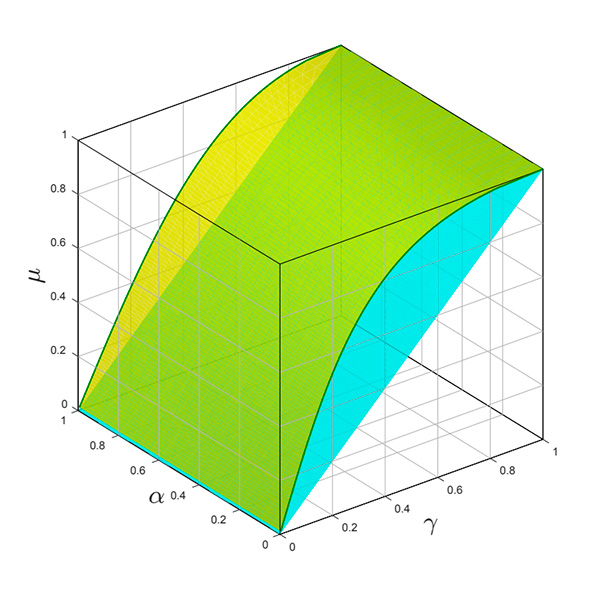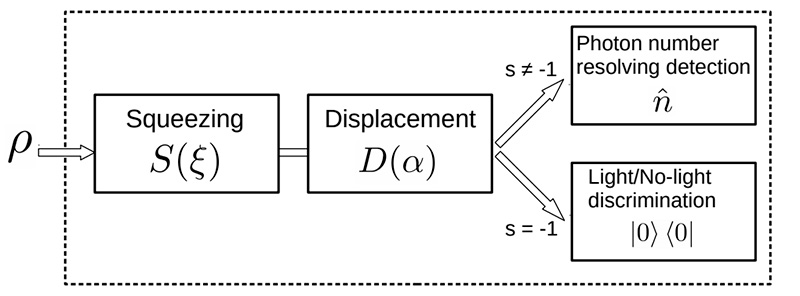Study of quantum correlations
Steering.
Two separate physical systems (without interaction between them) can nevertheless present correlations that go beyond those allowed by classical physics. These Quantum correlations are a consequence of entanglement, that is, the fact that in Quantum Mechanics the state of a two-part system is not necessarily the product of the states of each part [Fel17][You20].
One way to generate two interlaced light beams is to send a non-classical light beam (compressed light) to a beam splitter (BS). At the exit of the BS the light beams are (generally) intertwined. Considering this system, we study experimentally and theoretically the quantum correlations produced by determining the value of different quantifiers of these correlations [Val14].
A very particular type of quantum correlations is the phenomenon of “steering”, that is, the possibility that measurements made in one system affect the state of the other. Contrary to the other correlations, this effect may be unidirectional. For certain states of the set, one part can affect (drive) the other without the reciprocal being true. Motivated by the experimental study, we theoretically analyze in detail the possibility of steering between Gaussian states for symmetric states (obtainable with a BS of 50% transmission/reflection). We identify the set of all symmetric states for which steering is possible by using Gaussian observables and show that in certain cases other (non-Gaussian) observables can be more efficient than Gaussians [Ben22].
Non-locality.
A particularity of Gaussian states is that they present quasi-probability distributions with classical characteristics. For a time it was thought that this would make it impossible to violate the Bell inequalities that must be verified in the results of measurements carried out on a system with two parts when these are determined by local conditions. However, the violation of Bell’s inequalities and consequently the demonstration of non-locality can be carried out through the use of particular (observable) measurements. Our contribution has consisted of introducing a new family of observables that allow the observation of non-locality. These observables are based on the compression (squeezing) of the states received by both parties. As a particular case, these observables allow a simple implementation consisting of compression followed by the detection of light or darkness. [Lez23].
[Fel17] “Direct-dynamical Entanglement–Discord relations“, V. Feldman, J. Meziero, A. Auyuanet. Quantum Inf Process 16:128 (2017).
[You20] “Entanglement–Coherence and Discord–Coherence analytical relations for X states“. J. D Young and A. Auyuanet, Quantum Information Processing 19, 398 (2020).
[Val14] “Experimental characterization of the Gaussian state of squeezed light obtained via single-passage through an atomic vapor“, P. Valente, A. Auyuanet, Barreiro, H. Failache, A. Lezama. Phys. Rev. A, 91, 053848 (2015).
[Ben22] “Einstein-Podolsky-Rosen steering in symmetrical Gaussian states“. E. Benech, A. Auyuanet, and A. Lezama. Phys. Rev. A 106, 042201 (2022).
[Lez23] “Bell non-locality in two-mode Gaussian states revealed via local squeezing”. A. Lezama and A. Auyuanet, Physical Review A, 108, 052219 (2023).




